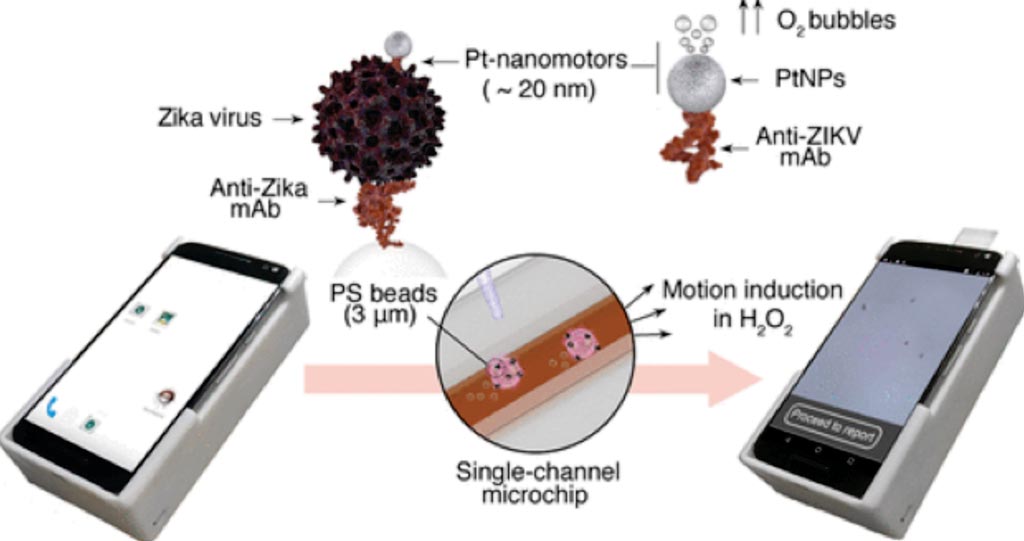Rapid Zika Detection Test Uses Smartphone Technology
By LabMedica International staff writers
Posted on 11 Jul 2018
The Zika virus, which continues to cause microcephaly and other neurological complications in infants whose mothers were infected during pregnancy, remains a public health concern.Posted on 11 Jul 2018
Traditional virus diagnostics rely on detecting antibodies in a person's bloodstream that target Zika. However, many closely related viruses, including dengue, can elicit similar antibodies, leading to a high false positive rate for such tests.

Image: Motion-based immunological detection of Zika virus using Platinum (Pt)-Nanomotors and a cell phone (Photo courtesy of Brigham and Women\'s Hospital).
Investigators from Brigham and Women's Hospital (Boston, MA; USA) and their colleagues have developed a new way to rapidly and accurately diagnose Zika using mobile health technologies that could potentially be deployed in resource-limited settings. The team used nanotechnology and developed tiny platinum nanomotors that target Zika as well as microbeads that bind the virus. When both components are added to a sample containing Zika, they form a three-dimensional complex that moves in the presence of hydrogen peroxide (H2O2). This movement can be detected using a smartphone hooked up to an optical device that costs USD 5.
The presence of virus in a testing sample results in the accumulation of platinum (Pt)-nanomotors on the surface of beads, causing their motion in H2O2 solution. Then the virus concentration is detected in correlation with the change in beads motion. The developed nanomotor-based bead-motion cell phone (NBC) system was capable of detecting Zika virus (ZIKV) in samples with virus concentrations as low as 1 particle/μL. The NBC system allowed a highly specific detection of ZIKV in the presence of the closely related dengue virus and other neurotropic viruses, such as herpes simplex virus type 1 and human cytomegalovirus.
Mohamed Shehata Draz, PhD, a postdoctoral fellow and the first author of the study, said, “The NBC system has the potential to be used at the point of care for disease detection in both developed and developing countries. This is an important way to eliminate the social stress related to Zika virus infection and health problems specifically related to newborns.” The study was published online on May 16, 2018, in the journal ACS Nano.
Related Links:
Brigham and Women's Hospital













